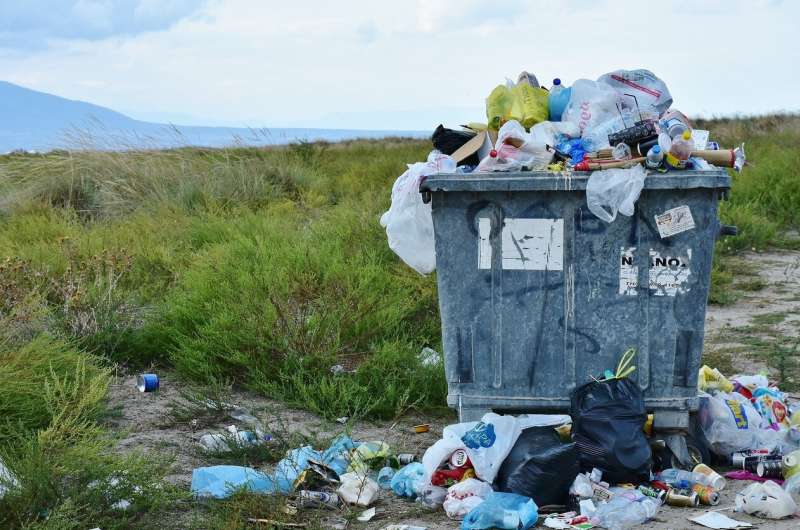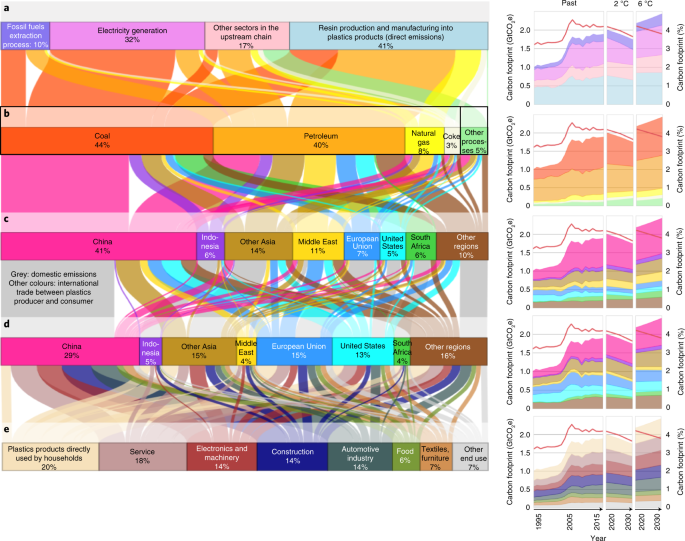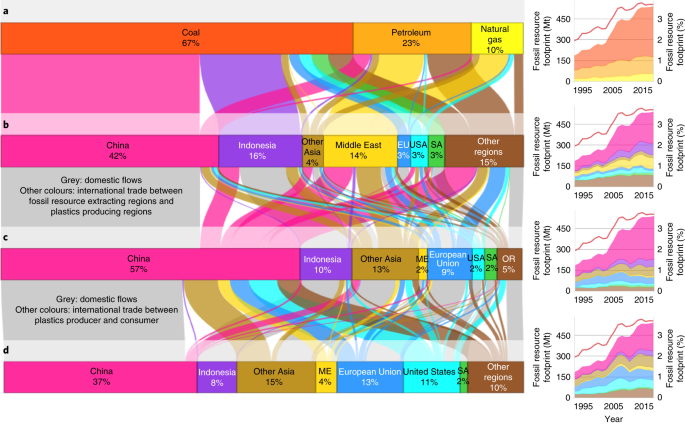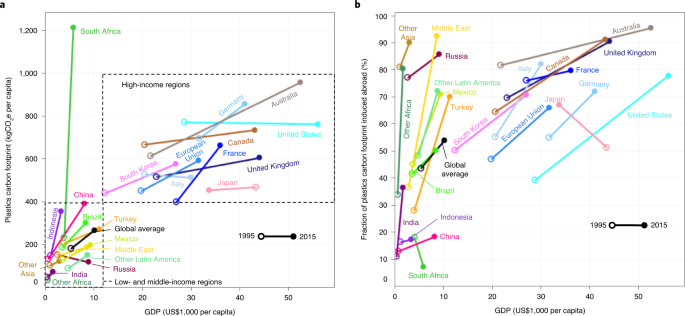Growing carbon footprint for plastics

Plastics are useful, cheap and extremely popular. Global demand has quadrupled in the last forty years and is expected to continue to rise, with correspondingly negative consequences for the environment and human health. The public is generally aware of the environmental harm caused by plastics at the end of their life cycle in particular, such as when they release greenhouse gasses and air pollutants when burned, or pollute water and soil in the form of microplastics.
Research into the global environmental impact of plastics has also focused primarily on the disposal phase. There are few studies into the production of plastics, which also affects the climate and air quality. In-depth analysis, however, requires detailed information on supply chains and processes in order to trace the relevant material and energy flows.
Assessing the global footprint of plastics
"So far, the simplistic assumption has been that the production of plastic requires roughly the same amount of fossil fuel as is contained in the raw materials in plastic—above all petroleum," says Livia Cabernard, a doctoral student at the Institute of Science, Technology and Policy (ISTP) at ETH Zurich. The problem here, however, is that the relative significance of production versus disposal has been significantly underestimated.
Cabernard is part of a team of researchers led by Stephan Pfister, Senior Scientist at ISTP, and Stefanie Hellweg, ETH Professor of Ecological Systems Design at the Institute of Environmental Engineering. Through painstaking detective work, the team analyzed the climate and health impact of the global plastics supply chain over a 20-year period.
In a study recently published in Nature Sustainability, the researchers show that the global carbon footprint of plastics has doubled since 1995, reaching 2 billion tons of CO2 equivalent (CO2e) in 2015. This represents 4.5 percent of global greenhouse gas emissions, and is more than previously thought. Over the same period, the global health footprint of plastics from fine particulate air pollution has increased by 70 percent, causing approximately 2.2 million disability-adjusted life years (DALYs) in 2015.
Coal for process heat, electricity and as a raw material
For their study, the team determined the greenhouse gas emissions generated across the life cycle of plastics—from fossil resource extraction, to processing into product classes and use, through to end of life, including recycling, incineration and landfill.
The researchers identify booming plastic production in coal-based newly industrialized countries such as China, India, Indonesia and South Africa as the main cause of the growing greenhouse gas footprint of plastics. The energy and process heat for the production of plastics in these countries comes primarily from the combustion of coal. A small amount of coal is also used as a raw material for plastics.
"The plastics-related carbon footprint of China's transport sector, Indonesia's electronics industry and India's construction industry has increased more than 50-fold since 1995," explains Cabernard. Globally, carbon-based emissions in plastics production have quadrupled since 1995 and now account for nearly half of the global carbon footprint of plastics.
When coal is burned, it produces extremely fine particles that accumulate in the air. Such particulate matter is highly harmful to health and can cause asthma, bronchitis and cardiovascular disease. As more and more coal is used for process heat, electricity and as a raw material in plastic production, the negative consequences for health are also increasing.
Underestimated plastic production
In contrast to earlier estimates, which assumed equal amounts of fuel and raw material for the production of plastics, the ETH researchers have now proven that twice as much fossil energy is burned for plastic production as is contained as a raw material in plastic.
This affects the assessment of the environmental consequences. "Even in a worst-case scenario in which all plastics are incinerated, their production accounts for the lion's share of total greenhouse gas and particulate matter emissions," says Cabernard. The overall production phase of plastics is responsible for the vast majority (96 percent) of the carbon footprint of plastics.
Insights thanks to new methodology
There had previously only been one publication that examined the global carbon footprint of plastics production. "This underestimated the greenhouse gas emissions, however, because it did not take into account the increasing dependence on coal due to the outsourcing of production processes to coal-based countries," Cabernard explains.
The researchers used a new method for their study that Cabernard had previously developed in her doctoral thesis under the supervision of Pfister and Hellweg. This approach involves a multi-regional input-output analysis that can accurately map global supply chains from production to consumption across industries, countries and regions.Researchers suggest a way to achieve net-zero emission plastics
More information: Livia Cabernard, Growing environmental footprint of plastics driven by coal combustion, Nature Sustainability (2021). DOI: 10.1038/s41893-021-00807-2. www.nature.com/articles/s41893-021-00807-2
Journal information: Nature Sustainability
Provided by ETH Zurich


